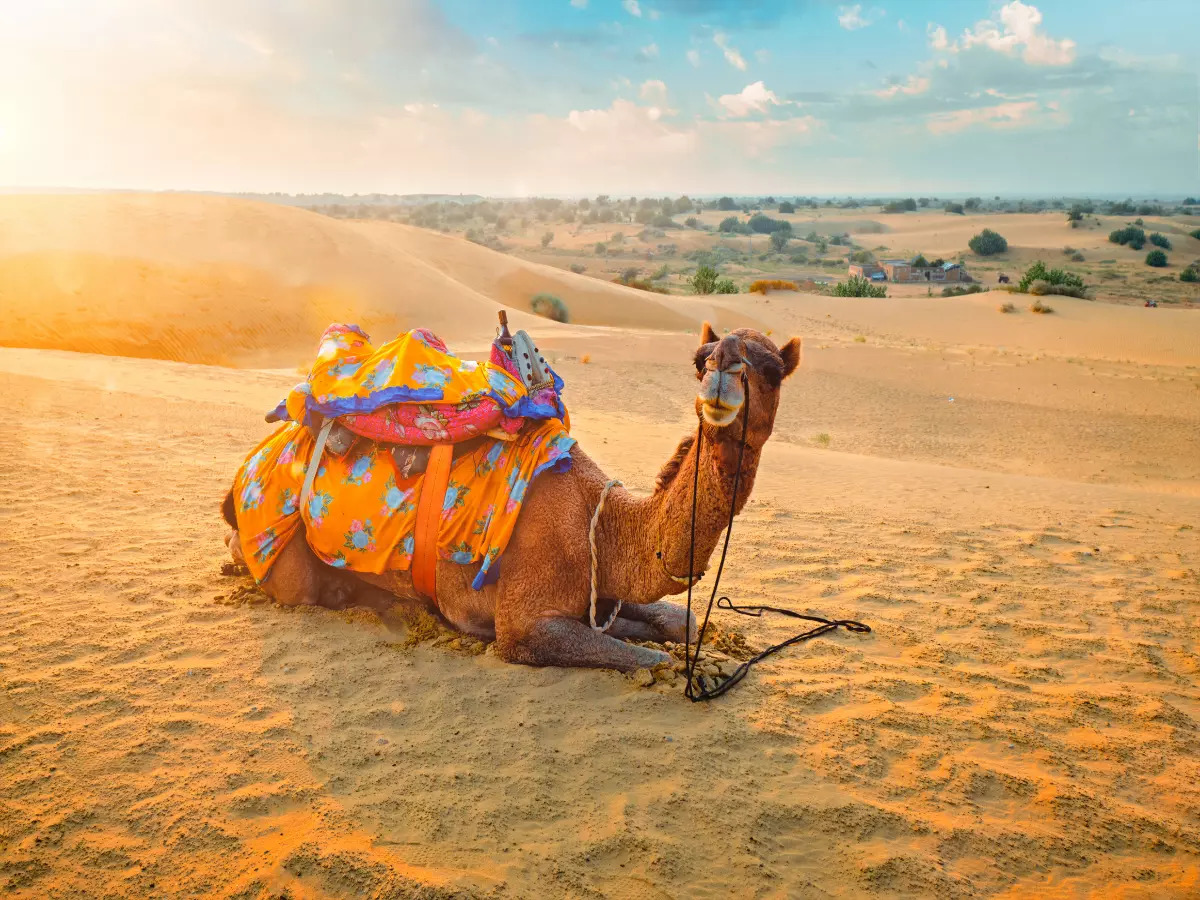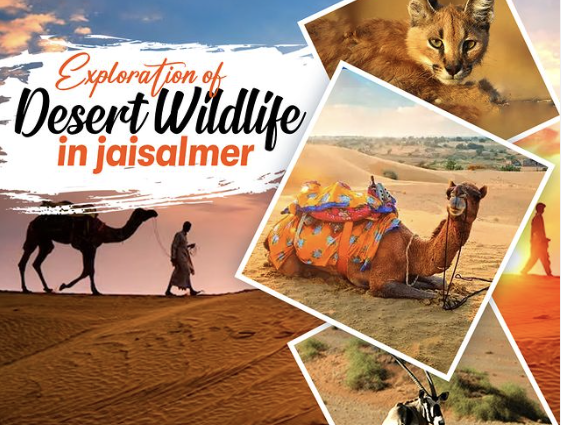Nestled in the heart of the Thar Desert, Jaisalmer is a mesmerizing destination in the Indian state of Rajasthan. While its majestic forts, intricate architecture, and vibrant culture attract tourists from far and wide, there’s another aspect of Jaisalmer that remains relatively unexplored by many – its diverse wildlife. Beyond the golden sands and ancient structures, lies a thriving ecosystem teeming with fascinating creatures that have adapted to the harsh desert environment.
In this guide, we’ll delve into the enchanting world of desert wildlife, focusing on the unique experiences offered by exploring the wildlife of the desert camps in Jaisalmer. Desert Camps in Jaisalmer offer a gateway to this fascinating realm, where visitors can immerse themselves in the wonders of nature while experiencing the rustic charm of desert life.

The Desert Ecosystem: A Fragile Balance
Before we embark on our journey into the desert camps, it’s essential to understand the delicate balance that exists within the desert ecosystem. Despite its seemingly harsh conditions, the Thar Desert is home to a surprising variety of flora and fauna. From hardy desert plants like cacti and thorny shrubs to elusive desert animals such as the Indian fox and the desert cat, every organism plays a vital role in maintaining the equilibrium of this fragile ecosystem. As we venture into the desert camps in Jaisalmer, we’ll witness firsthand how these creatures have adapted to survive in one of the most inhospitable environments on earth.
Things to Know Before You Go
- Climate: Jaisalmer experiences extreme temperatures, with scorching summers and chilly winters. It’s crucial to plan your visit during the cooler months, preferably between October and March, to avoid the sweltering heat.
- Accommodation: There are numerous desert camps scattered across the dunes of Jaisalmer, offering a range of accommodation options from luxury tents to rustic mud huts. It’s advisable to book your stay in advance, especially during the peak tourist season, to secure your spot in one of the sought-after Desert Camps in Jaisalmer.
- Guided Tours: Many desert camps organize guided wildlife tours led by experienced naturalists who are well-versed in the local flora and fauna. Opting for these tours can enhance your wildlife viewing experience and provide valuable insights into the desert ecosystem.
- Safety Precautions: While exploring the desert, it’s essential to stay hydrated, wear sunscreen, and follow the instructions of your guide to ensure a safe and enjoyable experience. Additionally, be mindful of the fragile desert environment and refrain from disturbing the wildlife or littering.
Wildlife Encounters in the Desert Camps
![]()
Bird Watching: The Thar Desert is a haven for birdwatchers, boasting a diverse avian population that includes migratory birds as well as resident species. From majestic raptors like the short-toed snake eagle to colorful desert dwellers like the Indian roller, there’s no shortage of feathered wonders to behold. As the sun rises over the dunes, embark on a guided birdwatching excursion to spot some of the desert’s most elusive avian inhabitants.
Nocturnal Safaris: As the heat of the day subsides and the desert comes alive under the cover of darkness, embark on a nocturnal safari to witness the nocturnal creatures of the Thar Desert. From elusive desert foxes and Indian porcupines to the enigmatic Indian desert cat, the desert reveals a whole new world of wildlife after sunset. Equipped with powerful spotlights, your guide will lead you on an unforgettable adventure through the moonlit dunes, where every rustle and shadow holds the promise of an exciting encounter.
Desert Flora: While the fauna of the Thar Desert often steal the spotlight, the region’s flora is equally fascinating. Take a stroll through the desert camps and marvel at the resilience of plants like the khejri tree and the desert rose, which have evolved ingenious adaptations to survive in the arid landscape. Learn about the traditional uses of desert plants and their significance in the lives of the local communities who depend on them for food, medicine, and shelter.
Animal Tracking: For the more adventurous souls, many desert camps offer guided animal tracking expeditions led by expert naturalists. Learn to decipher the subtle signs left behind by desert creatures as you follow their tracks through the sandy terrain. From identifying the distinctive paw prints of a desert fox to uncovering the hidden burrows of a sand boa, animal tracking offers a fascinating glimpse into the secret lives of the desert’s inhabitants.
Conservation Efforts and Sustainable Tourism
As visitors to this fragile ecosystem, it’s our responsibility to minimize our impact on the environment and support conservation efforts aimed at preserving the biodiversity of the Thar Desert. Many desert camps in Jaisalmer are committed to sustainable tourism practices, implementing measures such as waste management, water conservation, and community engagement initiatives to minimize their ecological footprint. By choosing eco-friendly accommodation options and supporting responsible tour operators, travelers can contribute to the conservation of this unique wilderness while enjoying unforgettable wildlife experiences.
Conclusion
Exploring the wildlife of the desert camps in Jaisalmer offers a rare opportunity to connect with nature in one of the most captivating landscapes on earth. From the thrill of spotting elusive desert creatures to the tranquility of watching the sunset over the endless dunes, every moment spent in the desert is an adventure waiting to unfold. By embracing the wonders of the desert ecosystem and supporting sustainable tourism practices, we can ensure that future generations will continue to marvel at the beauty and diversity of this extraordinary wilderness. So pack your bags, embark on a journey into the heart of the Thar Desert, and prepare to be amazed by the enchanting wildlife that calls Jaisalmer home.

